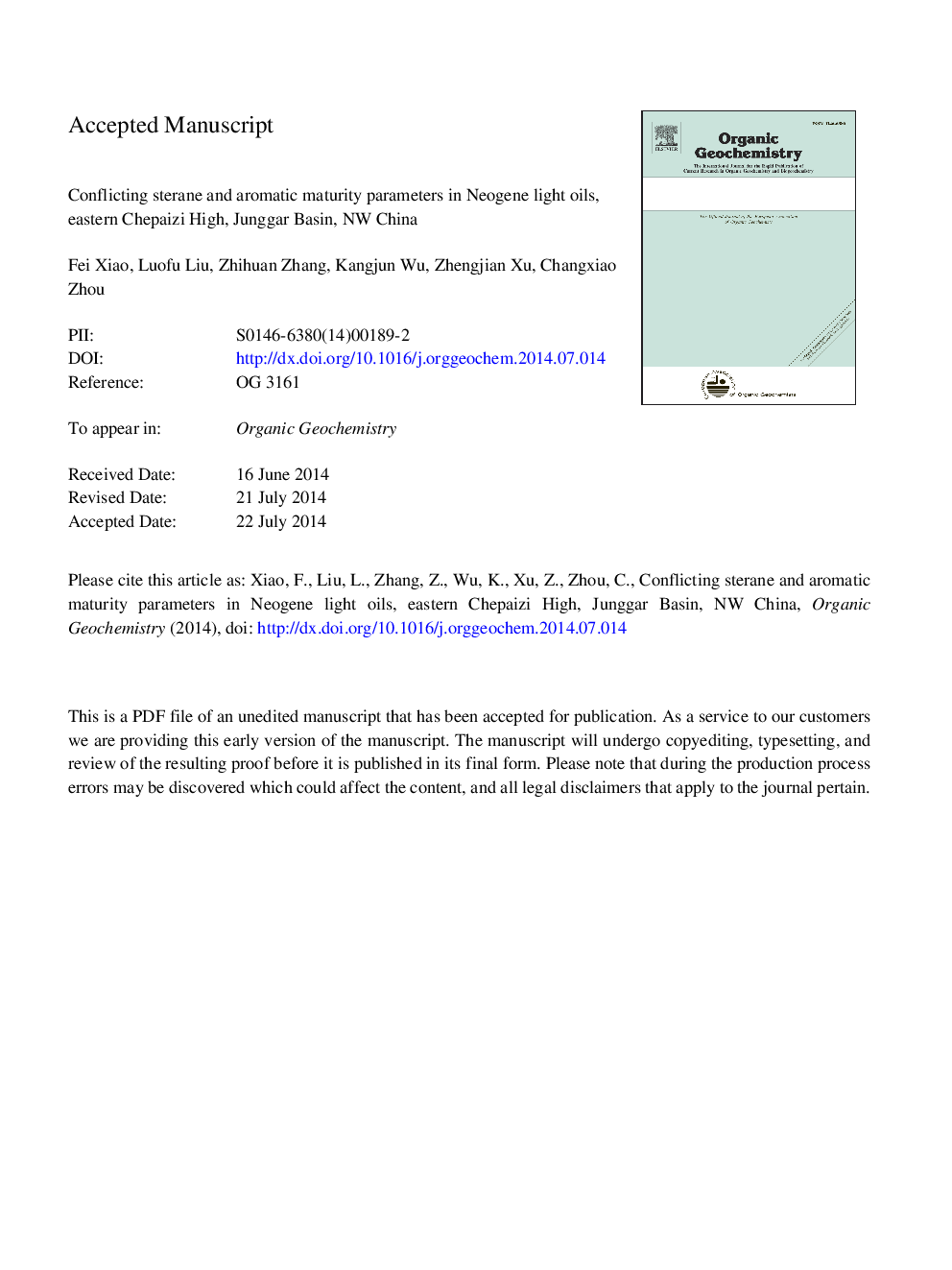| Article ID | Journal | Published Year | Pages | File Type |
|---|---|---|---|---|
| 5162239 | Organic Geochemistry | 2014 | 48 Pages |
Abstract
The saturated and aromatic hydrocarbon maturity characteristics of crude oils from the eastern Chepaizi High in the Junggar Basin of northwest China were analyzed in detail. The results show that sterane maturity parameters for light oils from the Neogene Shawan Formation differ from other maturity parameters. Sterane αααC29 20S/(20S + 20R) and C29 ββ/(ββ + αα) ratios indicate low maturity, while aromatic hydrocarbons indicate high maturity. We infer that light oils from the Shawan Formation have higher maturity than Cretaceous and Jurassic crude oils and were generated at equivalent vitrinite reflectance of â¼0.9-1.2%. It can be concluded that the Shawan light oils originated mainly from deeply buried, highly mature Jurassic source rocks, southeast of Sikeshu Sag, southwest of Shawan Sag, and west of Huomatu Anticline Belt. During upward migration, crude oils generated from Jurassic source rock dissolved less mature Cretaceous bitumen resulting in a mixture with apparently conflicting parameters. Phase fractionation during migration also could have contributed to the anomalously low sterane maturity parameters.
Related Topics
Physical Sciences and Engineering
Chemistry
Organic Chemistry
Authors
Fei Xiao, Luofu Liu, Zhihuan Zhang, Kangjun Wu, Zhengjian Xu, Changxiao Zhou,
